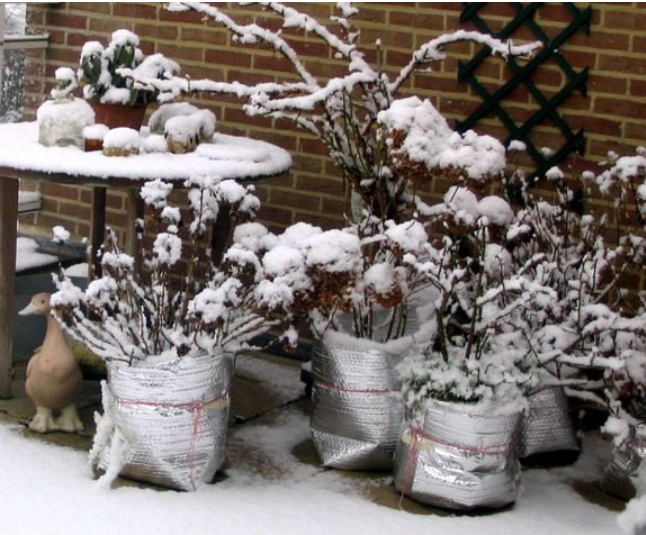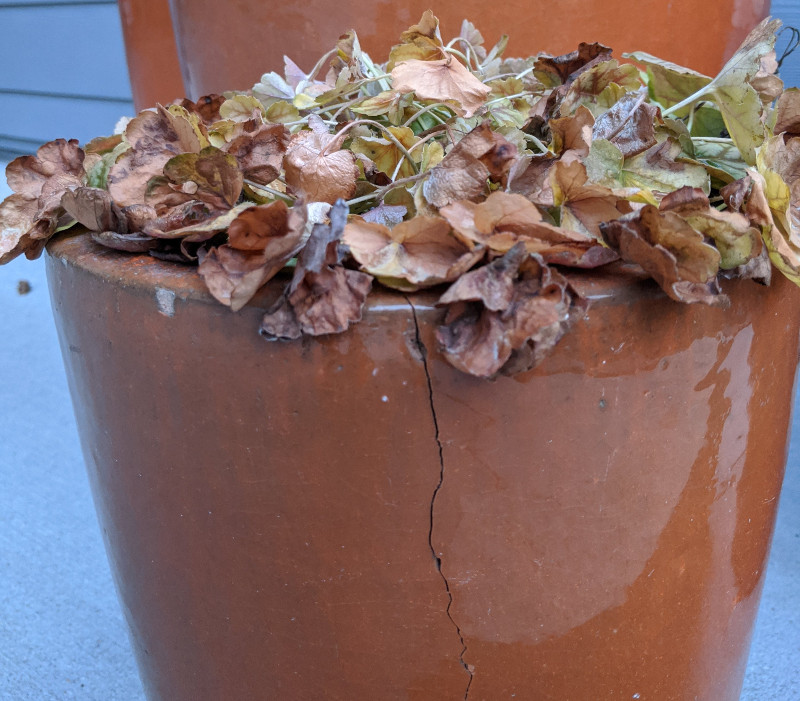Growing plants in garden planters has many benefits throughout the year. However, one thing to keep in mind while planning for container gardening is what you will do with the plants and planter in the winter. Some types of planters do not do well in the winter and can crack and break apart in freezing conditions. There are also other considerations for the types of plants you plan on growing inside the planters to ensure their survival.
Best Material For Garden Planters in the Winter
It is best to choose non-porous materials for your garden planters. Ceramic, terra cotta and clay pots will absorb water, and when the water freezes the pots will crack and break apart.

We recommend getting a resin plastic planter as the best material to use. Metal and wood are also good options, but those materials will rust and decay over time. Resin plastic is also lighter and easier to move than wood or metal.
Winterizing Your Planter
Even resin plastic planters should be prepared for winter. But all types of planters should be set up to be winter proofed. Ensure the planter has good drainage. This can be done by adding substrate below the soil at the bottom of the planter, adding properly sized drainage holes at the bottom of the container and using high quality potting soil. This also prevents the plants from getting waterlogged.
Make sure the planters aren’t directly on the dirt. This will help drainage as well because the dirt can freeze and block the planter from draining properly.
Protect the planter from the wind. This helps protect the root systems of the plants that you are trying to keep alive for the following year. You can either move the plants to a protected area, or you can surround the planter with additional protection.

Protecting Ceramic Pots in the Winter
Clay, Terra Cotta, and Ceramic pots should all be moved indoors over the winter to a dry location or a location that won’t freeze. If you are going to try and keep your plants alive during the winter in these containers, be sure the plants still receive sunlight and water. Also, be sure to check and ensure your plant doesn’t require a dormant period. Moving a plant indoors into a warm room over the winter may prevent the plant from going dormant and impact its health the following year. Garages and basements work well as places to store the pots.

If you don't plan on having the plants survive the winter, you can empty the soil from the planter and clean out the planter with a water and bleach mixture. This will prevent any pests and diseases from surviving the winter and impacting your garden the following year!
Concrete Planters Winter Care
Concrete planters can bring up many issues. The lime used in concrete can leach into the soil and change the pH of the soil. This will sometimes cause disfigurement of the plants, kill certain types of plants or change the colors of the blooms. The weight of the planters is also much heavier than other materials. Also, during the winter the expanding and contracting of the moisture will often lead to the planter cracking.
Best Cold Weather Plants For Pots
As a general rule of thumb, you should always choose plants that are cold hardy at least 1 growing zone colder than where you live. So if you live in USDA growing zone 5, you should use plants that are hardy to zone 4. This is because plants are more susceptible to cold weather in planters compared to growing in the ground. Some of our favorite cold weather shrubs to grow in pots for year round interest are boxwoods, loropetalum, hollies, & arborvitae.
 |
Author Chris Link - Published 9-19-2020 |
